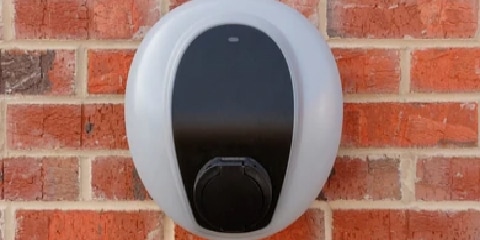Choosing an electric vehicle (EV) involves considering home charging options, which can initially seem complex due to various available methods. In the UK, there are two primary at-home charging solutions: a cable connected to a 7kW home wallbox or a 3-pin household socket.
While wallboxes may have installation costs, they offer enhanced safety, user-friendly operation, convenient scheduling through apps, and significantly faster charging compared to using a 3-pin plug for most vehicles. So it is an advantage to install a wallbox if your property allows it.
Charging rates vary between a 3-pin plug and a home charger, impacting the charging time for different EV models. A 7kW home electric car charger can charge a vehicle up to three times faster than a standard 3-pin outlet.
It’s important to note that fully charging an EV with a larger battery, such as the BMW i7 with a 101.7kWh battery, overnight using a 3-pin plug may not be feasible. A minimum 7kW home charger is recommended for efficient overnight charging, providing greater versatility for all EV’s compared to 3-pin connectors.
While 3-pin plug sockets can charge EV’s, they were not designed to handle prolonged charging loads, risking overheating and potential hazards to sockets and household wiring. While some argue that hybrid vehicles with smaller batteries may not need a wallbox, fixed amp 3-pin chargers are considered emergency options and should not be the sole solution unless an electrician has certified the socket as safe to use for regular charging..
Variable amp 3-pin chargers are viewed as a safer option, capable of adjusting the charge rate based on conditions, reducing flow during overheating, and offering timer delay options to take advantage of night time tariffs.
Dedicated home chargers installed on separate electrical circuits are explicitly designed for car charging demands, adhering to safety regulations. As a result, they are considered far safer than other options.
The challenge with 3-pin plug cables lies in their need to be threaded through windows and doors. Dedicated wallbox chargers are installed conveniently and are simple to plug into.
It’s worth noting that most residential buildings have single-phase power, limiting the maximum home charging rate to 7kW. Faster charge points, such as 22kW units, are typically found in commercial buildings with three-phase power.
Regarding moving house with an EV charger, it is possible to take your wallbox with you, but it involves removal and reinstallation costs by a licensed electrician. Comparing the cost of moving the charger versus installing a new one, it might be more cost efficient to install a new wallbox. Additionally, the former property may still have cabling that new owners can use for their charger.



